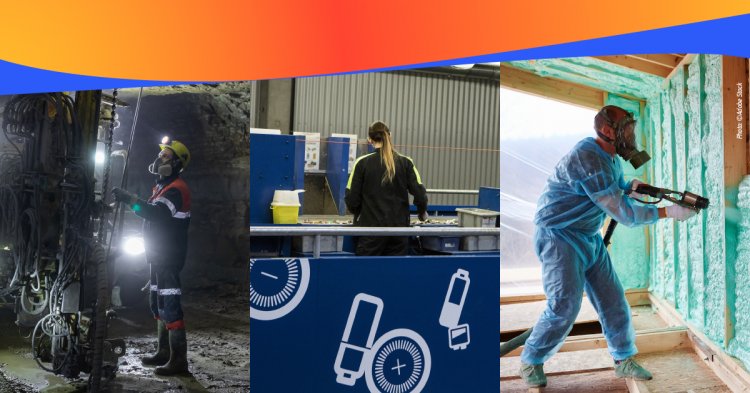Lead and diisocyanates: EU set to protect workers from exposure
Lead and diisocyanates / EU set to protect workers from exposure

Today, the two co-legislators provisionally agreed on the limit values for lead and diisocyanates. The deal still needs to be confirmed by both institutions before going through the formal adoption procedure.
It is the first time in 40 years that we are revising the limit values for occupational exposure to lead, and the first time ever to introduce limit values for diisocyanates. A few months ago, we struck a deal to protect EU workers from asbestos. This provisional agreement is another milestone towards ensuring a safe green transition for all workers in the EU.
Main elements of the compromise
Reducing limit values for lead and setting new ones for diiisocyanates
The negotiators of the presidency and the European Parliament agreed on the core of this draft directive, which is the introduction of limit values for the two groups of substances, as the two co-legislators shared the commitment to improving workers’ health and safety.
They maintained the Commission’s ambition on lowering the occupational exposure limit for lead from 0.15mg/m3 to 0.03mg/m3, and the biological limit value for lead from 70µg/100ml to 15µg/100ml.
The compromise text is also aligned with the Commission’s proposal on setting the first-ever overall occupational exposure limit for diisocyanates at 6µg NCO/m3 (i.e. the maximum concentration in the air a worker breathes during the course of an 8-hour working day) and a short-term exposure limit of 12µg NCO/m3 (i.e. average exposure over a period of 15 minutes).
The co-legislators also agreed on a transitional period for the new biological limit value for lead (until 31 December 2028) in order to ensure that member states have sufficient time to effectively update production processes and to implement the necessary prevention and protection measures.
Specific rules and health surveillance measures
The co-legislators reached a balanced agreement as regards specific provisions on protecting the health of workers who already have high levels of lead in their blood as a result of historical exposure, while ensuring their continuity on the labour market.
As for women of childbearing age, the negotiators achieved a balance between protecting safety and health of foetus and offspring of female workers – through medical monitoring – and ensuring their equal treatment on the labour market.
Both co-legislators acknowledged the importance of qualifying lead as a “non-threshold reprotoxic substance”, meaning there is no level below which exposure to lead would be safe for the development of the offspring of female workers of childbearing age.
Review and implementation of the directive
The co-legislators agreed to task the Commission to subsequently assess the limit values for lead in line with scientific knowledge and propose legislative amendments, where appropriate.
According to the agreed text, the Commission will initiate the procedure to consider the inclusion of endocrine disrupters in the directive, since the latter may have harmful effects on the workers’ health.
Finally, the agreed text includes a requirement for the Commission to issue guidelines on health surveillance, which should include advice on how to implement provisions relating to blood lead levels.
Next steps
The provisional agreement will now have to be endorsed by the Council and the Parliament. It will then be formally adopted by both institutions following legal-linguistic revision. After the formal steps of the adoption have been completed, member states will have two years to incorporate the provisions of the directive into their national legislation.
Background
The EU has had rules in place to limit exposure to lead since 1982. Prolonged exposure to lead is known to affect reproductive functions and foetal development, as well as to damage the nervous system, the kidneys, the heart and blood.
Diisocyanates are a group of chemicals that are widely used in in industry, particularly in the manufacturing of polyurethanes and as hardeners in industrial paints, glues, varnishes and resins. It is estimated that 4.1 million workers are currently exposed to these chemicals. There are currently no limit values for diisocyanates at EU level, yet they are known to cause asthma and other respiratory diseases.



















